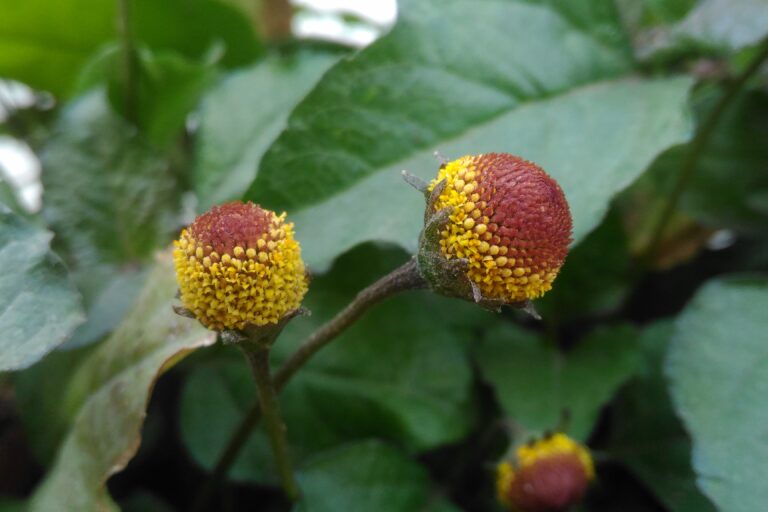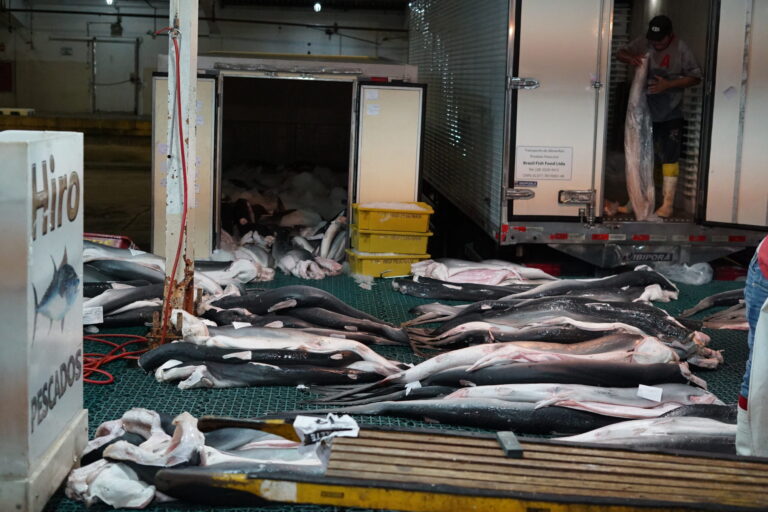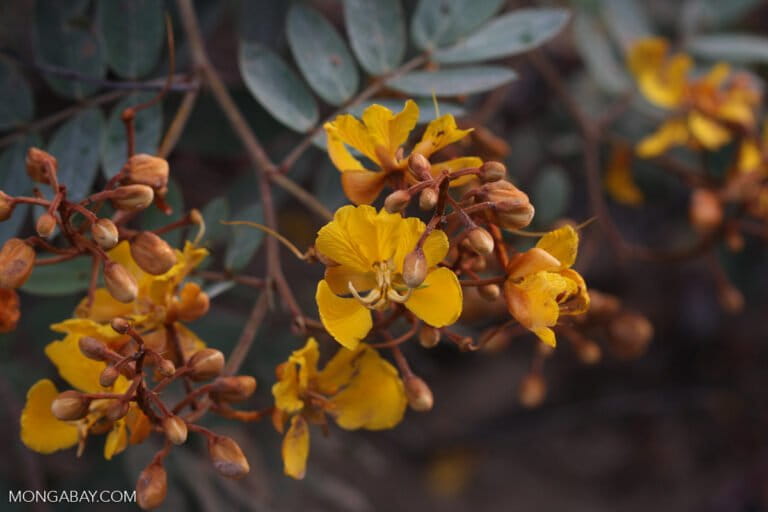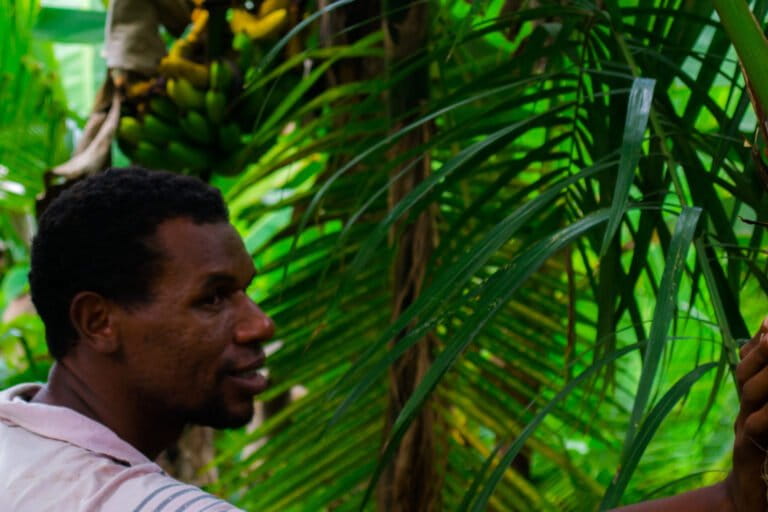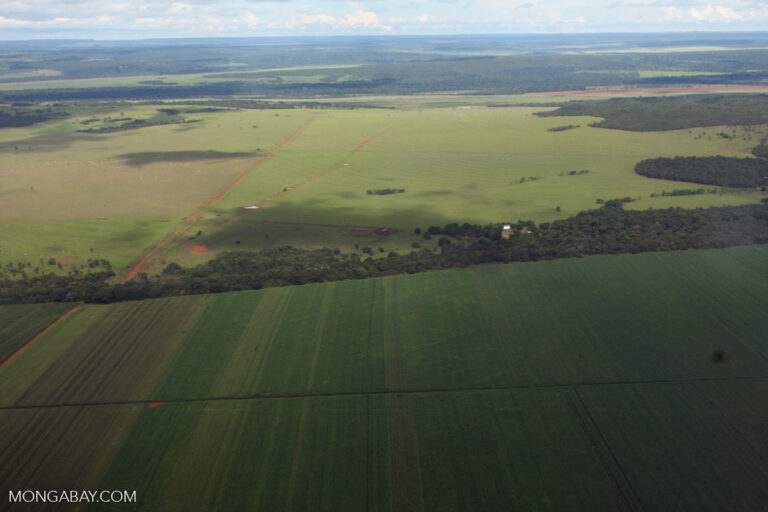Agostinho, C.S., A. Akama and P.H.F. Lucinda. 2009. ‘Capítulo 1. Inserção da UHE Peixe Angical na bacia Araguaia-Tocantins e metodologia de amostragem’. In C.S. Agostinho, F.M. Pelicice and E.E. Marques. Reservatório de peixe angical: bases ecológicas para o manejo da ictiofauna. São Carlos: RIMA – Relatório de Impacto Ambiental. pp. 5–14.
The American Enterprise Institute & Aid, Data Research and Evaluation Unit. 2017. Version 2.0. Williamsburg, VA: AidData at William & Mary.
Anderson, E.P., C.N. Jenkins, S. Heilpern, J.A. Maldonado-Ocampo, F.M. Carvajal-Vallejos, A.C. Encalada … and N. Salcedo. 2018. ‘Fragmentation of Andes-to-Amazon connectivity by hydropower dams’. Science Advances 4 (1): eaao1642.
Arias, M.E., T.A. Cochrane, M. Kummu, H. Lauri, G.W. Holtgrieve, J. Koponen and T. Piman. 2014. ‘Impacts of hydropower and climate change on drivers of ecological productivity of Southeast Asia’s most important wetland’. Ecological Modelling 272: 252–263.
Assahiraa, C. et al. 2017. ‘Tree mortality of a flood-adapted species in response of hydrographic changes caused by an Amazonian river dam’. Forest Ecology and Management 396: 113–123.
Bandura, R. and S. McKeown. 2020. Sustainable Infrastructure in the Amazon. Washington, DC: Center for Strategic and International Studies.
Barber, C.P., M.A. Cochrane, C.M. Souza and W.F. Laurance. 2014. ‘Roads, deforestation, and the mitigating effect of protected areas in the Amazon’. Biological Conservation 177: 203–209.
Barthem, R.B., M. Goulding, R.G. Leite, C. Cañas, B. Forsberg, E. Venticinque, P.Petry, M.L.D.B. Ribeiro, J. Chuctaya and A. Mercado. 2017. ‘Goliath catfish spawning in the far western Amazon confirmed by the distribution of mature adults, drifting larvae and migrating juveniles’. Scientific Reports 7: 41784.
Bermúdez-Liévano. B. 2019. China’s Belt and Road advances in Latin America’s Andean region, Dialogo Chino: https://dialogochino.net/en/infrastructure/27815-chinas-belt-and-road-advances-in-latin-americas-andean-region/
Berti, L. and A. Gatto Boueri. 6 Dec. 2020. Low reservoirs force Brazil to buy energy from Argentina. The Brazilian Report https://brazilian.report/latin-america/2020/12/06/low-reservoirs-force-brazil-to-buy-energy-from-argentina/?mc_cid=05deb41048&mc_eid=e4c13bc18e
BNDES. 2011. Informe Anual, Programa de Aceleración del Crecimiento, https://www.bndes.gov.br/SiteBNDES/bndes/bndes_es/Hotsites/Informe_Anual_2011/Capitulos/actuacion_institucional/o_bndes_politicas_publicas/pac.html
Bôas, A. 28 Aug. 2020. Ferrogrão, a Path of Illusion, Pulitzer Center: https://pulitzercenter.org/blog/ferrograo-path-illusion
Borges, T. and S. Branford. 26 Aug. 2019. Bolsonaro expresses ‘love’ for Amazon as it burns, offers no policy shift. Mongabay.com: https://news.mongabay.com/2019/08/bolsonaro-expresses-love-for-amazon-as-it-burns-offers-no-policy-shift/
Branford S. 2018. Brazil announces end to Amazon mega-dam building policy, Mongabay Series: Amazon Infrastructure, Global Forests https://news.mongabay.com/2018/01/brazil-announces-end-to-amazon-mega-dam-building-policy/
Carneiro da Cunha, M., Caixeta, R., Campbell, J.M., Fausto, C., Kelly, J.A., Lomnitz, C., Londoño Sulkin, C.D., Pompeia, C. and Vilaça, A. 2017. ‘Indigenous peoples boxed in by Brazil’s political crisis’. HAU: Journal of Ethnographic Theory 7 (2): 403–426.
Cayetano, S., C. Alvarado and PO. Tuesta. 6 Dec. 2019. Personajes vinculados al ‘Club de la Construcción’ detrás de licitación de la Hidrovía Amazónica. CONVOCCA – Periodismo de Investigación y Análisis De Datos https://convoca.pe/investigacion/personajes-vinculados-al-club-de-la-construccion-detras-de-licitacion-de-la-hidrovia
Cella‐Ribeiro, A., C.R. da Costa Doria, J. Dutka‐Gianelli, H. Alves and G. Torrente‐Vilara. 2017. ‘Temporal fish community responses to two cascade run‐of‐river dams in the Madeira River, Amazon basin’. Ecohydrology 10 (8): e1889.
Cochrane, T.A., T.J. Killeen and O. Rosales. 2006. Agua, Gas y Agroindustria, la Gestion Sostenible de la Riego Agrícola en Santa Cruz, Bolivia. La Paz, Bolivia: Conservation International.
Costa, L. 24 Feb. 2021. Brazil to cut stake in Eletrobras to 45% from 61% in privatization – energy secretary, Reuters https://www.reuters.com/article/eletrobras-privatisation/brazil-still-plans-to-privatize-state-utility-eletrobras-sources-say-idUSL1N2K32PN
Cruz, D. 2019. Cooperación de China en América Latina y el caribe en Infraestructura: discursos, modalidades y conflictos socioambientales, Asociación Ambiente y Sociedad. Bogotá, Colombia: https://www.chinaenamericalatina.info/es/inicio/
Cui, Shoujun and Zhang, Zheng. 2019. ‘China and Brazil development finance cooperation. A case study of the Belo Monte Transmission Line project’. In E. Duseel Peters (ed.) China’s Financing in Latin America And The Caribbean. Universidad Nacional Autónoma de México: https://dusselpeters.com/146.pdf
Dammert, J.L. 2013, Financing Infrastructure Projects in the Southern Amazon of Peru: its relation with environmental and social safeguards, Global Development Policy Center, Working paper 017 https://www.bu.edu/gdp/files/2018/10/GEGI_GDP-Peru-WP.pdf
Dos Santos, M.A., L.P. Rosa, B. Sikar, E. Sikar, E. and E.O. Dos Santos. 2006. ‘Gross greenhouse gas fluxes from hydro-power reservoir compared to thermo-power plants’. Energy Policy 34 (4): 481–488.
Dourojeanni, M.J. 2005. MAP: Madre de Dios, Acre, Pando, Associação O Eco: http://www.oeco.org.br/colunas/marc-dourojeanni/16374-oeco-14292/
Dourojeanni, M.J. 2006. Estudio de caso sobre la carretera Interoceánica en la Amazonía sur del Perú. Conservación Internacional, Perú: https://www.academia.edu/5674644/Estudio_de_caso_sobre_la_Carretera_Interoceanica_en_la_Amazonia_Sur_del_peru
Dourojeanini, M. J. 2015. El ferrocarril interoceánico chino y nuestra desordenada visión de Desarrollo. SPDA Actualidad Ambiental https://www.actualidadambiental.pe/el-ferrocarril-interoceanico-chino/
Draper, F.C., K.H. Roucoux, I.T. Lawson, E.T. Mitchard, E.N.H. Coronado, ). Lähteenoja … and T.R. Baker. 2014. ‘The distribution and amount of carbon in the largest peatland complex in Amazonia’. Environmental Research Letters 9 (12): 124017.
Duchelle, A., A. Almeyda, N. Hoyos, M. Marsik, E. Broadbent and K.A. Kainer. 2010. ‘Conservation in an Amazonian tri-national frontier: patterns and drivers of land cover change in community-managed forests’. In proceedings of the conference ‘Taking stock of smallholder and community forestry: where do we go from here’.
Dummitt, B. 14 Sept. 2015. Chinese firms to pay $1.42 billion for EnCana oil assets, The Wall Street Journal https://www.wsj.com/articles/SB112660924522839142
Elgueta, M.E. 2020. La irrupción de China en América Latina: Atentos a la ‘letra chica’ o neocolonización. Infogate https://www.infogate.cl/2020/11/18/la-irrupcion-de-china-en-america-latina-atentos-a-la-letra-chica/
Estache, A. and G. Garsous. 2012. ‘The impact of infrastructure on growth in developing countries’. International Finance Corporation, IFC Economics Notes, Note 1, Washington DC.
Fainguelernt, M.B. 2016. ‘The historical trajectory of the Belo Monte hydroelectric plant’s environmental licensing process’. Ambiente & Sociedade 19 (2): 245–264.
Farinosi, F. 2017. ‘Energy Transitions and Climate Security in Brazil’. In Robert A. Looney (ed.) Handbook of Transitions to Energy and Climate Security. Routledge, 526 pages,
Fearnside, P.M. 1999. ‘Social impacts of Brazil’s Tucuruí dam’. Environmental Management 24 (4): 483–495.
Fearnside, P.M. 2001. ‘Environmental impacts of Brazil’s Tucuruí Dam: Unlearned lessons for hydroelectric development in Amazonia’. Environmental Management 27 (3): 377–396.
Fearnside, P.M. 2005. ‘Deforestation in Brazilian Amazonia: history, rates, and consequences’. Conservation Biology 19 (3): 680–688.
Fearnside, P.M. 2006. ‘Dams in the Amazon: Belo Monte and Brazil’s hydroelectric development of the Xingu River Basin’. Environmental Management 38 (1): 16–27.
Fearnside, P.M. 2007. ‘Brazil’s Cuiabá-Santarém (BR-163) Highway: The environmental cost of paving a soybean corridor through the Amazon’. Environmental Management 39 (5): 601–614.
Fearnside, P. 3 Nov. 2020. BR-319: The beginning of the end for Brazil’s Amazon forest (commentary), Amazon Infrastructure https://news.mongabay.com/2020/11/br-319-the-beginning-of-the-end-for-brazils-amazon-forest-commentary/
Fearnside, P.M. 2015. ‘Amazon dams and waterways: Brazil’s Tapajós Basin plans’. Ambio 44 (5): 426–439.
Fearnside, P.M. 2016. ‘Greenhouse gas emissions from Brazil’s Amazonian hydroelectric dams’. Environmental Research Letters 11: 011002.
Fearnside, P.M. and A.M.R. Figueiredo. 2015. ‘China’s influence on deforestation in Brazilian Amazonia: A growing force in the state of Mato Grosso’. In R. Ray, K. Gallagher, A. López and C. Sanborn (eds). China and Sustainable Development in Latin America: The Social and Environmental Dimension, pp. 229–265 http://www.bu.edu/gdp-cn/files/2017/09/Brazil.pdf
Finer, M. and C.N. Jenkins. 2012. ‘Proliferation of hydroelectric dams in the Andean Amazon and implications for Andes-Amazon connectivity’. PLOS ONE 7 (4): e35126.
Fleck, L. 2009. Eficiência econômica, riscos e custos ambientais da reconstrução da rodovia BR-319. Conservation Strategy Fund https://www.conservation-strategy.org/sites/default/files/field-file/CSF_Eficiencia_economica_BR319.pdf
Fonseca, V. 2013. Hidrelétrica do Bem Querer: grande lago, pouca energia. ((o))eco – Associação O Eco https://www.oeco.org.br/reportagens/27446-hidreletrica-do-bem-querer-grande-lago-pouca-energia/
Forsberg, B.R., J.M. Melack, T. Dunne, R.B. Barthem, M. Goulding, R.C. Paiva … and S. Weisser. 2017. ‘The potential impact of new Andean dams on Amazon fluvial ecosystems’. PLOS ONE 12 (8): e0182254.
Fraser, B.J. 20 Dec. 2007. Troubled Amazon corner, Grassroots forum attempts to alleviate negative impacts of Interoceanic Highway. Latinamerica Press: http://www.lapress.org/articles.asp?item=1&art=5441
Fricke, A.T., C.A. Nittrouer, A.S. Ogston, D.J. Nowacki, N.E. Asp, P.W. Souza Filh … and A.M. Jalowska. 2017. ‘River tributaries as sediment sinks: Processes operating where the Tapajós and Xingu rivers meet the Amazon tidal river’. Sedimentology 64 (6): 1731–1753.
Gallagher, Kevin P. and Margaret Myers. 2021. China-Latin America Finance Database. Washington, DC: Inter-American Dialogue.
García Delgado, F. 29 Jan. 2021. El futuro incierto de la Hidrovía Amazónica peruana. Mongabay.com https://es-mongabay-com.mongabay.com/2021/01/hidrovia-amazonia-peru-consulta-previa-pueblos-indigenas/
Gómez, A . 2018. Inversión pública y financiamiento chino en América Latina, Asociación Ambiente y Sociedad, Ecuador https://www.chinaenamericalatina.info/inversion-publica-y-financiamiento-chino-en-america-latina/
Gonzales, J. 28 June 2019. Amazon infrastructure puts 68% of indigenous lands / protected areas at risk. Mongabay Series: Amazon Agribusiness, Amazon Illegal Deforestation, Amazon Infrastructure, Global Forests https://news.mongabay.com/2019/06/amazon-infrastructure-puts-68-of-indigenous-lands-protected-areas-at-risk-report/
Guyot, J.L., N. Fillzola, J. Quintanilla and J. Cortez. 1996. ‘Dissolved solids and suspended sediment yields in the Rio Madeira basin, from the Bolivian Andes to the Amazon’. International Association of Hydrological Sciences, Publication 236: 55–64.
Harris, M. 13 Aug. 2015. Guyana nixes plans for 165-MW Amaila Falls hydropower project. Hydro Review https://www.hydroreview.com/world-regions/guyana-nixes-plans-for-165-mw-amaila-falls-hydropower-project/#gref
Harris, M. 12 Jan 2017. Peru’s San Gaban project receives Chinese cash infusion’. Hydro Review: https://www.hydroreview.com/business-finance/peru-s-san-gaban-project-receives-chinese-cash-infusion/#gref
Hemming, J. 2003. Die If You Must: The Brazilian Indians in the Twentieth Century. (New York: Macmillan).
Higgins, T. 2020. Para ampliar hidrovia na Amazônia, governo planeja dinamitar habitat de botos e tartarugas, por Infraestrutura na Amazônia: https://brasil-mongabay-com.mongabay.com/series/infraestrutura-na-amazonia/
Higgins, T. 17 Jan. 2020. Belo Monte boondoggle: Brazil’s biggest, costliest dam may be unviable. Mongabay.com, Amazon Infrastructure series https://news.mongabay.com/2020/01/belo-monte-boondoggle-brazils-biggest-costliest-dam-may-be-unviable/
Ho, M., U. Lall, M. Allaire, N. Devineni, H.H. Kwon, I. Pal, D. Raff and D. Wegner. 2017. ‘The future role of dams in the United States of America’. Water Resources Research 53 (2): 982–998.
Horna, H. 1976. ‘South America’s marginal highway’. The Journal of Developing Areas 10 (4): 409–424.
IDB – Interamerican Development Bank. 2017. La Red del Futuro: Desarrollo de una red eléctrica limpia y sostenible para América Latina: https://publications.iadb.org/handle/11319/8682#sthash.lX4X5BiS.dpuf
IFC- International Finance Corporation. 2012. Sustainability Policies & Standards E&S Performance Standards https://www.ifc.org/wps/wcm/connect/topics_ext_content/ifc_external_corporate_site/sustainability-at-ifc/policies-standards
IFC – International Finance Corporation. 2013. Summary of Investment Information, Equatorial Energia SA https://disclosures.ifc.org/project-detail/SII/32170/equatorial-energia-s-a
Junk, W.J., F. Wittmann, J. Schöngart and M.T. Piedade. 2015. ‘A classification of the major habitats of Amazonian black-water river floodplains and a comparison with their white-water counterparts’. Wetlands Ecology and Management 23 (4): 677–693.
Killeen T.J. 2007. A Perfect Storm in the Amazon Wilderness, Development and Conservation in the Context of the Initiative for Integration of the Regional Infrastructure of South America (IIRSA). Washington, DC: Conservation International.
Killeen, T.J., M. Douglas, T. Consiglio, P. M. Jørgensen and J. Mejia. 2007. ‘Dry spots and wet spots in the Andean hotspot’. Journal of Biogeography 34 (8): 1357–1373.
Killeen, T.J., A. Guerra, V. Calderon, M. Calzada, L. Correa, L. Soria, B. Quezada and M. Stieninger. 2008. ‘Total historical land-use change in Bolivia, who, where, why and how much’. Ecology & Society 13 (36).
Killeen, T.J. and L.A. Solórzano. 2008. ‘Conservation strategies to mitigate impacts from climate change in Amazonia’. Philosophical Transactions of the Royal Society B: Biological Sciences 363 (1498): 1881–1888.
Mérona, B., A.A. Juras, G.M. Santos and I.H.O. Cintra. 2010. Os peixes e a pesca no baixo Rio Tocantins: 20 anos depois da UHE Tucuruí. Centrais Elétricas do Norte do Brasil S.A – Eletrobras Eletronorte http://www.eletronorte.gov.br/opencms/export/sites/eletronorte/publicacoes/publicacoes/Os_Peixes_e_a_Pesca_no_Baixo_Rio_Tocantins.pdf
Molina, S. 2014. El Puente Rurrenabaque-San Buenaventura. La responsabilidad del BID. http://fobomade.org.bo/2014/06/01/elpuente-rurrenabaque/
Myers, M. and R. Ray. 2021. ‘Shifting gears: Chinese finance in LACV 2020’. The Dialogue, China-Latin America report Global Deevelopment Center https://www.thedialogue.org/wp-content/uploads/2021/02/Chinese_Finance_LAC_2020.pdf
Oliveira, R. 10 Dec. 2019. No Xingu, finalização da última turbina de Belo Monte pode significar ‘o fim do rio’. Publica, Agência de Jornalismo Investigativo https://apublica.org/2019/12/no-xingu-finalizacao-da-ultima-turbina-de-belo-monte-pode-significar-o-fim-do-rio/
Orcotorio-Figueroa, R. 2020. Hidroeléctricas en Suramérica y en Perú: Situación de la cuenca del río Marañón. DAR – Derecho, Ambiente y Recursos Naturales https://dar.org.pe/daropina-hidroelectricas/
Ortiz, F. 2014. Belo Monte ameaça maior sítio de desova de tartarugas da América do Sul. https://www.oeco.org.br/reportagens/27941-belo-monte-ameaca-maior-sitio-de-desova-de-tartarugas-da-america-do-sul/
Paz Cardona, A.J. 14 July 2020. Ecuador: gobierno reconoce que la erosión de la cascada San Rafael podría afectar la hidroeléctrica Coca Codo Sinclair. https://es-mongabay-com.mongabay.com/2020/07/erosion-rio-coca-ecuador-hidroelectrica-coca-codo-sinclair/
Pérez, Gabriel and Sarah Nunes. 2016. Natural resources logistics in landlocked countries in Latin America and the Caribbean. Facilitation of Transport and Trade in Latin America and the Caribbean – FAL Bulletin 348. CEPAL: http://repository.eclac.org/handle/11362/60
Piccone, T.J. 2016. The Geopolitics of China’s Rise in Latin America. Washington DC, Brookings Institution.
Ponce-Jara, M.A., M. Castro, M.R. Pelaez-Samaniego, J.L. Espinoza-Abad and E. Ruiz. 2018. ‘Electricity sector in Ecuador: An overview of the 2007–2017 decade’. Energy Policy 113: 513–522.
Prasso, S. 19 Sept. 2018. A Chinese company reshaping the world leaves a troubled trail. Bloomberg News: https://www.bloomberg.com/news/features/2018-09-19/a-chinese-company-reshaping-the-world-leaves-a-troubled-trail
RAISG – Rede Amazônica de Informação Socioambiental Georreferenciada. 2021. Dados Cartográficos https://www.amazoniasocioambiental.org/pt-br/mapas/
Raposa, K. 7 May 2014. Was Brazil’s Belo Monte dam a bad idea? Forbes: https://www.forbes.com/sites/kenrapoza/2014/03/07/was-brazils-belo-monte-dam-a-bad-idea/?sh=48692e692a4e
Rioja, F. 2013. ‘What is the value of infrastructure maintenance? A survey’. Infrastructure and Land Policies 13: 347–365. The Lincoln Institute of Land Policy: https://www.lincolninst.edu/sites/default/files/pubfiles/what-is-the-value-of-infrastructure-maintenance_0.pdf
Rivera-González, L., D. Bolonio, L.F. Mazadiego and R. Valencia-Chapi. 2019. ‘Long-term electricity supply and demand forecast (2018–2040): a LEAP model application towards a sustainable power generation system in Ecuador’. Sustainability 11 (19): 5316.
Rohter, L. (2019). Rondon: Uma Biogtrafia. Rio de Janeiro: Editora Schwarts.
Rubio, J., A. Escobedo, C. Vallejos, E. Oyague, A. Vera and M. Estrada. 2017. Marañón: Costo social de los impactos acumulativos de cinco proyectos hidroeléctricos. Serie Técnica Conservation Strategy Fund No. 50 https://www.conservation-strategy.org/sites/default/files/field-file/Maranon_Costo_Social_0.pdf
Sinclair, J.H. and T. Wasson. 1923. ‘Explorations in eastern Ecuador’. Geographical Review 13 (2): 190–210.
Straub, S. 2008. Infrastructure and Growth in Developing Countries Vol. 4460. World Bank Publications.
Volckhausen, T. 21 June 2017. New highway brings deforestation near two Colombian national parks. Mongabay Series: Global Forest Reporting Network, Global Forests: https://news.mongabay.com/2017/06/new-highway-brings-deforestation-to-two-colombian-national-parks/
Wade, W.H. 2011. ‘Boulevard of broken dreams: the inside story of the World Bank’s Polonoroeste Road Project in Brazil’s Amazon’. Grantham Research Institute on Climate Change and the Environment. Working Paper No. 55.
Wildlife Conservation Society. 2015. Análisis de la Evaluación de Impactos Ambientales de Hidroproyectos en Loreto, Perú: Estudio de los casos de la Central Hidroeléctrica Mazán y de la Hidrovía del Amazonas: https://peru.wcs.org/es-es/WCS-Perú/Publicaciones
Winemiller, K.O., P.B. McIntyre, L. Castello, E. Fluet-Chouinard, T. Giarrizzo, S. Nam … and M.L.J. Stiassny. 2016. ‘Balancing hydropower and biodiversity in the Amazon, Congo, and Mekong’. Science 351 (6269): 128–129.
Wittmann, H., F. von Blanckenburg, L. Maurice, J.L. Guyot, N. Filizola and P.W. Kubik. 2010. ‘Sediment production and delivery in the Amazon River basin quantified by in situ–produced cosmogenic nuclides and recent river loads’. Geological Society of America Bulletin: B30317-1.
Ziesler, R. and G.D. Ardizzone. 1979. The Inland Waters of Latin America. COPESCAL Tech. Paper No. 1.Rome: Food and Agriculture Organization – FAO.


